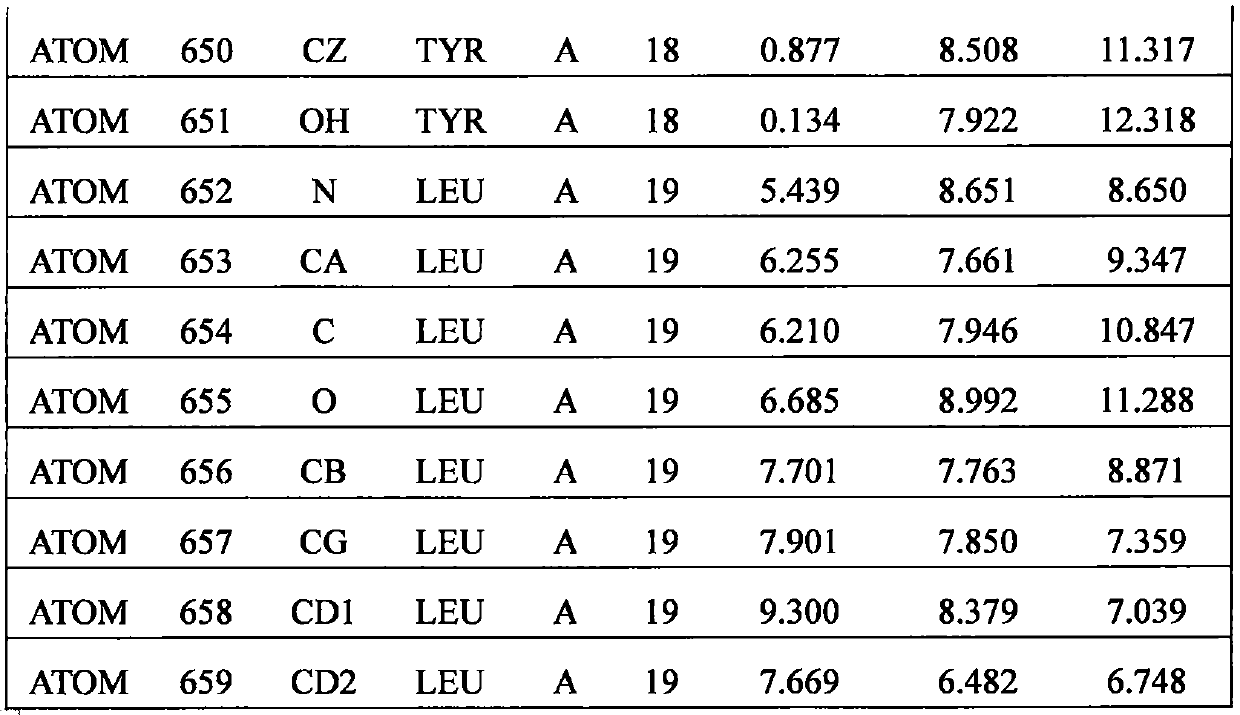Compounds for inducing tissue formation and uses thereof
A technology of analogues, peptidomimetics, in the field of compounds that induce tissue formation
- Summary
- Abstract
- Description
- Claims
- Application Information
AI Technical Summary
Problems solved by technology
Method used
Image
Examples
Embodiment 1
[1188] Example 1: Covalent deposition of GFR binding compounds described herein onto conventional titanium
[1189] Material modification was performed in a controlled environment (Ar environment, Glove Box). The strategy for covalent peptide immobilization includes (1) adding (3-aminopropyl)-triethoxysilane (at a concentration of 1 × 10 -2 M, 4 hours) grafted onto the surface of the implant, (2) with the heterobifunctional cross-linker 3-succinimidyl-3-maleimidyl propionate (concentration of 1 × 10 -3 M, 4 hours) to replace the terminal ammonia, thereby (3) allowing the "external" maleimide group to interact with the osteogenic peptide (at a concentration of 1 × 10 -3 M, 24 hours) response. After covalent immobilization, the modified material was washed with phosphate buffered saline (PBS 1X) solution for 5 days. PBS is a commonly used buffer in biological research. It is a water-based salt solution containing sodium phosphate, sodium chloride, and in some formulations po...
Embodiment 2
[1197] Example 2: Covalent deposition of GFR binding compounds described herein onto conventional PEEK materials
[1198] With ethylenediamine (NH 2 =NH 2 ) treatment of polyetheretherketone (PEEK) to generate -NH from ketone (=O) functional groups on the PEEK surface 2 (amine) functional group. Next, add PEEK-NH 2 Samples were immersed in a heterobifunctional crosslinker: 3-succinimidyl-3-maleimide propionate (at a concentration of 1 × 10 -3 M, 4 hours) solution, so that the "external" maleimide through the thiol group in the terminal cysteine and the GFR binding compound described herein (concentration 1 × 10 -3 M, 24 hours) response. After grafting, the modified material was rinsed with PBS 1X for 5 days.
[1199] Characterize the surface by grafting fluorescent peptides and other methods such as X-ray photoelectron spectroscopy. X-ray photoelectron spectroscopy was performed as described in the Methods section.
[1200] Table 2 shows the results obtained using PE...
Embodiment 3
[1203] Example 3: Covalent deposition of GFR binding compounds described herein onto PLLA
[1204] Dip PLLA (polylactic acid) into 2-(N -morpholino)-ethanesulfonic acid (MES buffer, 0.1 M in MilliQ water), followed by washing with MilliQ water (30 minutes). In SEQ ID NO: 8 as described herein (at a concentration of 1×10 -3 M, 18 hours, room temperature) for covalent immobilization in a GFR-binding compound solution. After covalent fixation, the modified material was washed with PBS 1X for 5 days.
[1205] Characterize the surface by using fluorescent peptides and other methods such as X-ray photoelectron spectroscopy. X-ray photoelectron spectroscopy was performed as described in the Methods section.
[1206] Table 3 shows the results obtained using PLLA covalently modified with SEQ ID NO:8.
[1207] name
[1208] table 3
PUM
| Property | Measurement | Unit |
|---|---|---|
| molecular weight | aaaaa | aaaaa |
| molecular weight | aaaaa | aaaaa |
| molecular weight | aaaaa | aaaaa |
Abstract
Description
Claims
Application Information
 Login to View More
Login to View More - R&D
- Intellectual Property
- Life Sciences
- Materials
- Tech Scout
- Unparalleled Data Quality
- Higher Quality Content
- 60% Fewer Hallucinations
Browse by: Latest US Patents, China's latest patents, Technical Efficacy Thesaurus, Application Domain, Technology Topic, Popular Technical Reports.
© 2025 PatSnap. All rights reserved.Legal|Privacy policy|Modern Slavery Act Transparency Statement|Sitemap|About US| Contact US: help@patsnap.com



